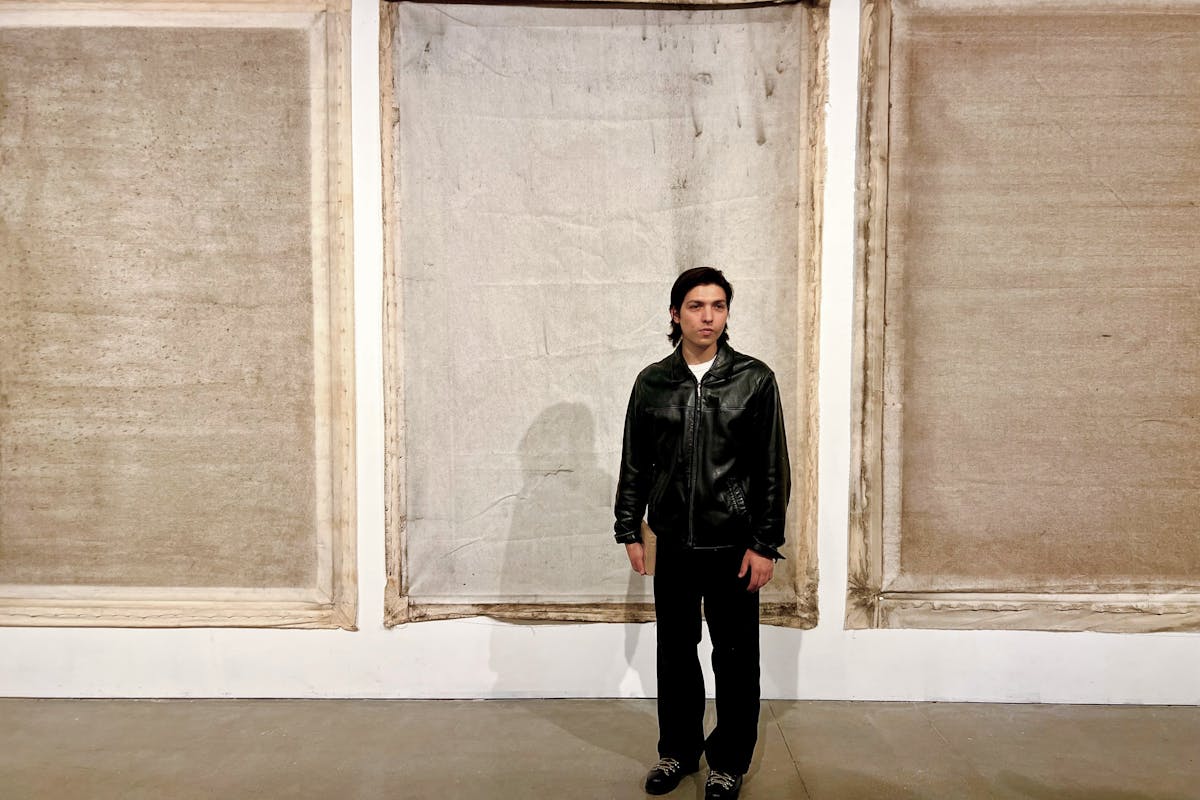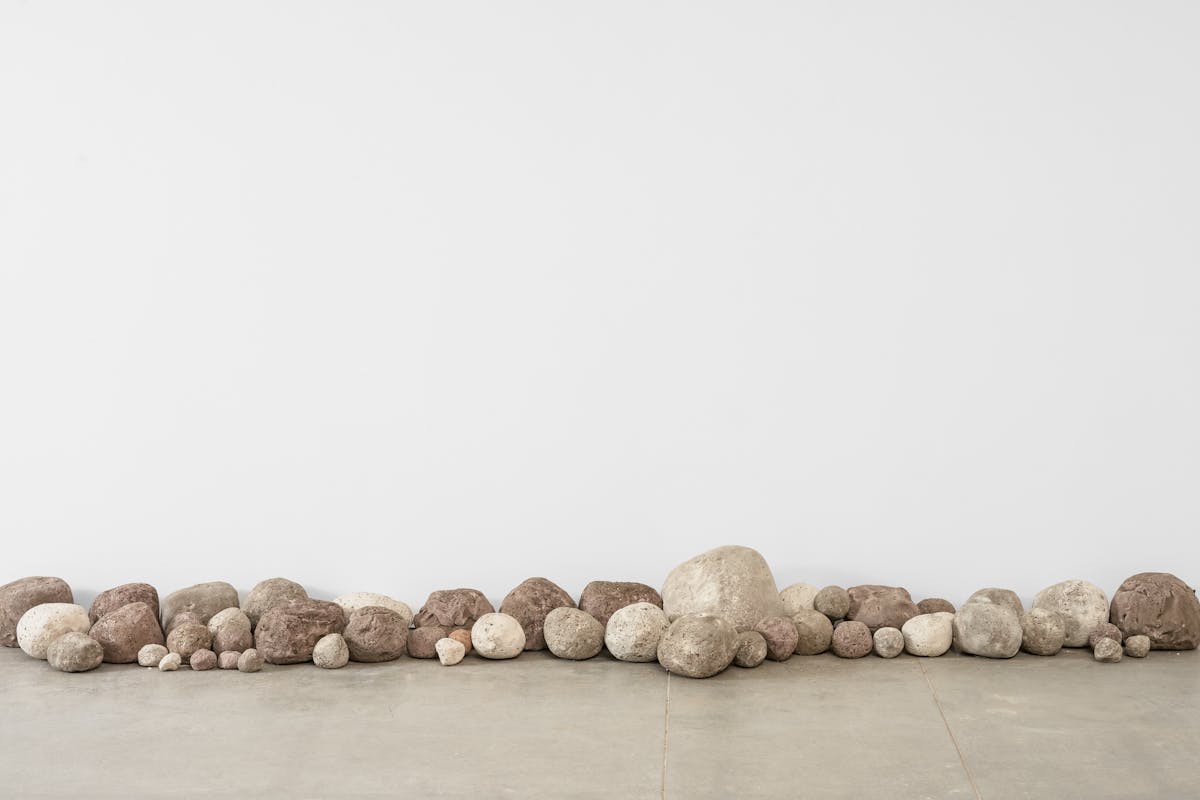Curiosity about vital conditions and brutal disparities drives M.F.A graduate Carlos Agredano’s work

Carlos Agredano didn’t start thinking of himself as an artist until he was an undergrad at Harvard University studying history and literature.
Harvard was a long way from his home in Lynwood, a city in Southeast Los Angeles, where his immigrant parents settled. His childhood backyard was the site of his first exhibition shortly after graduating from Harvard, a show that helped him get into the graduate program at UCLA. Agredano graduates with an M.F.A in fine arts this week.
That childhood backyard sits 35 feet from the I-105 freeway, a familial reality that drives the artist’s approach as a historian and creator. His sculpture and visual arts practice interrogates how policies like redlining and racially restrictive covenants enabled freeway construction, and how the legacy of those policies has manufactured air pollution disparities in Los Angeles.
“I use readymade and process-based sculptures to materialize the pollution that affects working-class communities of color like mine,” Agredano said.
For one project that meant rolling a ball of clay around streets in various Los Angeles neighborhoods, capturing the different colors of grime and soot. Creating the “Smog Stones” became a sort of performance art and conversation starter in the neighborhoods he rolled them through, Agredano said.
“I wanted to create an object that looked like a simple rock, but actually became something that contains data about a place, information that’s seemingly invisible or delivered in a way that people wouldn’t think contains information,” he said.

Pictured: Smog Stones, 2020-Smog, Carbon Monoxide (CO), Sulfur Dioxide (SO2), Nitrogen Dioxide ( NO2), Ground Level Ozone(O3), ,Particulate Matter (PM2.5 and PM10), soot, dirt, dust, guano, automobile tire microplastics, and other unidentified debris collected from various streets across Los Angeles CountyDimensions VaryThese stones, which are meant to resemble the river stones that decorate freeway mediums and exits, were created by rolling a ball of clay around different streets in Los Angeles. Each stone corresponds to a specific region in the city and functions as a single-layered record of the polluted ground in which they were rolled onto. These stones unearth the ecological, racial, and class dynamics that dictate Los Angeles’ built environment.Rocks with a darker coloration were rolled in areas that are primarily near freeways and industrial parks.
The artistic spark started for Agredano when he began taking art classes at Harvard, eventually landing a prestigious Radcliff Fellowship from the university, which allowed him to work with Angeleno and UCLA alum EJ Hill, a visual artist who similarly challenges perceptions of race, prejudices, and inequities with his writing, painting, and sculptures.
“That was kind of a huge moment for me because he had a very similar upbringing to me.He grew up in South L.A., and right before I worked for him I saw his Made in LA’ exhibition at the Hammer Museum,” Agredano said.
Hill became an inspiration and a mentor.
“He was the first person to tell me I was an artist,” Agredano said. “It was very cool and affirming, and I took it seriously from that point on.”
Agredano is tied to the city of his birth, fascinated by the history of Los Angeles, and the vast differences between places like Lynwood and Westwood. He attended UCLA for grad school in part because of the thriving Chicano Studies program here and opportunities for research related to that interest. It all went into the mix for his master’s thesis show.

He’s come a long way since that first backyard exhibition, which featured shopping cart low-riders, hybrid sculptures of fruit vendors and ice cream sellers, a toy police car with speakers blaring music that grew staticky when approached.
“These were definitely early works,” he said. “Me experimenting, embracing the street culture, thoughts of labor issues, and starting to think about the economic impact of racial urban planning systems. I invited friends, family, and a few artists from LA to see it. The works were positively received and it made me feel like I could really talk about my ideas.”
Agredano has already booked his next shows, including a group exhibition in July, at the Francois Ghebaly downtown and a solo exhibition at the Chinatown gallery Human Resources in October. That location is stirring up ideas for the artist thanks to its proximity to the 110, the oldest freeway in Los Angeles and the United States.
“I’ve only been an artist for five years and feel really privileged, and want to get more experienced,” Agredano said. “I also know the path I have chosen is challenging. I make things out of stuff that is toxic, or very ephemeral or site-specific installation pieces, you can’t really own it or sell it. But I’m definitely going to try to keep being an artist in L.A.”
Above all, Agredano wants to contribute to conversations about disparity and equity, especially around the most essential ingredient for life–fresh air.
“I feel sort of responsible for finding ways as an artist to provide evidence and hold people accountable, and inspire people to really think about these issues,” Agredano said.
Story by Jessica Wolf
Images courtesy Carlos Agredano

